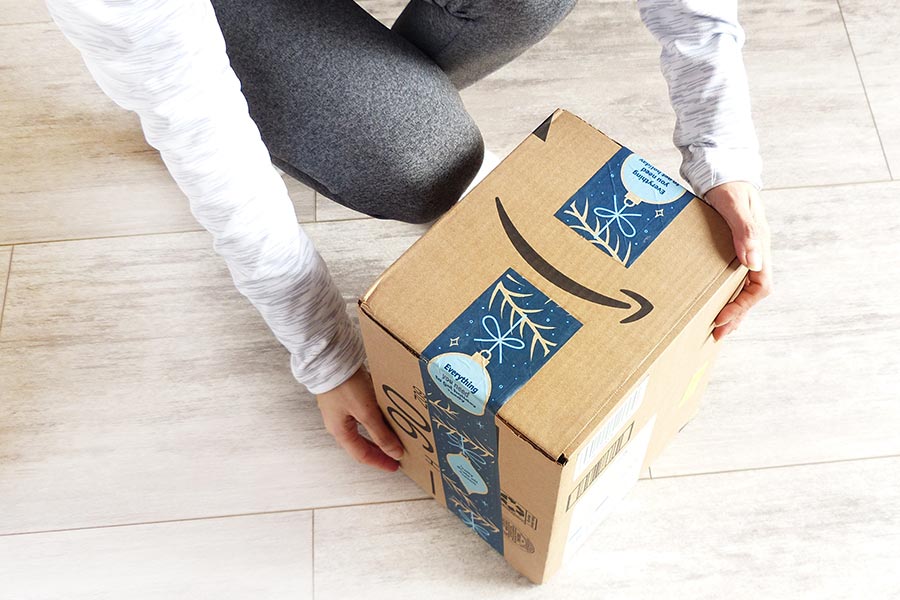Resources - Blog
Amazon FBA Tips for After Christmas Selling Success

The Amazon FBA tips you need after the holidays have ended. If you didn’t meet your holiday sales goals or are worried about lingering COVID restrictions, follow these Amazon FBA tips for after-Christmas selling success.
Amazon FBA sellers know that returns can seem endless after Christmas, and selling appears to slow down. Starting shortly after December 26th, millions of consumers will return Amazon products, and the items will go back to Amazon’s FBA warehouse. When this happens, you need to accept, process the return, and process the refund as quickly as possible.
Along with preparing for refunds, we also have other helpful Amazon FBA tips to successfully close out your 2021 and welcome your 2022 Amazon and e-marketplace strategy. Let’s dive right in.
Why You Need to Start Preparing for Amazon Holiday Returns and Refunds
This is the second year that Amazon has extended their return time period, and this will again create a higher spike in returns in January. So again, this year, it is a priority to stay on top of refunds. The one thing you can control with returns is not the number of returned products but how quickly you process your refunds.
Processing your refunds in a timely manner helps you be sure your order defect rate (ORD) doesn’t go over the 1% threshold. Although a high spike in returns can also impact your ORD rate, this is out of most sellers’ control.
If you are new to FBA selling on Amazon, take a look at our Feedvisor University pages that break down both managing returns and refunds.
Amazon FBA Tips for Brands, Retailers, and Sellers After the Holidays
We’ve got five Amazon FBA Tips that you can use to enhance your sales after Christmas and into 2022. Implement and optimize these tips on Amazon, and you should be in good shape for 2022 Q1 sales while keeping your ORD rates low.
1. Get Ready for an Increase in Amazon Returns
An increase in sales is always partnered with an increase in returns. This is a normal part of selling on any e-Marketplace. Amazon automatically takes out the funds from your seller account when an Amazon customer returns an item. If the customer does not actually return the item, then you should get an automatic reimbursement from Amazon within 45 days.
Feedvisor’s returns dashboard allows you to look at return data by volume, value, SKU, vendor, and brand to show how returns impact your profitability and operations inventory management.
Be sure to track these items and time frames because many reimbursements fall through the cracks.
Further Reading: What’s New About E-Commerce Returns This Year
2. Keep Track of Amazon Reviews Coming In
With higher sales, there should be an increase in feedback, both positive and negative. Depending on the type of review, you should have a few different responses ready.
If the feedback is about the FBA process, like shipping times or a negative product review, it is in your court to remove the feedback to keep your score high as it is part of your seller metrics. When you have a higher seller metric, you have a better chance of winning the buy box.
Reviews have been a pain point on Amazon since their update on April 25, 2021 for brands and sellers after they were no longer able to use ERP to respond to certain reviews and decipher star ratings. This new limit to seller involvement is still being examined to see how it impacts sales.
3. Selling & Buying Christmas Items After Christmas
When looking for more merchandise, be wary of the larger retail chain stores that drop their prices. The items you find on clearance may be the same items other resellers find. If you are going to jump on those sales, you need to move fast and list and ship them on Amazon as soon as possible.
One possible win for Amazon FBA sellers is Christmas-themed items. The week leading up to and after Christmas is a great time to snatch up items that go on sale at drastically reduced prices. Use this time frame to stock up for your Amazon inventory because buyers don’t just buy seasonal items in-season.
4. Prepare for Post-Christmas Buyers on Amazon
You don’t need to just be prepared for returns, though. Shopping doesn’t stop after December. Remember to keep sourcing products for post-Christmas buyers.
Post-Christmas buyers include those with Amazon gift cards, people looking to buy the products they didn’t get from friends and family, accessories to go with new presents, and those buying regular or non-seasonal purchases.
Our next tip will explain how you can look at previous year’s trends paired with popular holiday items to ensure you are equipped with the right products and the right amount of stock.
5. Look Forward to 2022 After Looking Back at 2021
It may seem like this year, along with the past few years, is different from the rest. But there are many trends, patterns, and predictions that you can use to enhance and prepare for a better 2022.
To get you started, we recently released our 2022 Consumer Behavior Trends Report and our 2021 Cyber Five Report. Check out both to be sure you’re staying up to date on the trends and industry insights to stay competitive in both Amazon and other e-marketplaces.
Along with industry trends and standards, be sure to review your own item and selling trends. With Feedvisor’s performance dashboard, you can identify your high-performing and underperforming listings, along with unprofitable items to help optimize your product investment strategy.
Whether you use Amazon’s dashboards in their Seller Central or third-party software, take the time to review what’s been working well and what has been recently trending to be sure you are setting yourself up for success with the inevitable January buyers.
Final Thoughts
It can take a whole year to prepare for Cyber Five and the holidays, so be sure to go back and analyze your catalog data, Cyber Five performance, and return forecasts to get a sense of budget predictions and goal benchmarks for next year.
2021 is more or less over, and it is crucial that you take the time to look back so you can look forward and adjust your budgets for the new year to avoid inefficient spending, plan inventory, optimize your business, and solidify your plan to refund returns efficiently.
